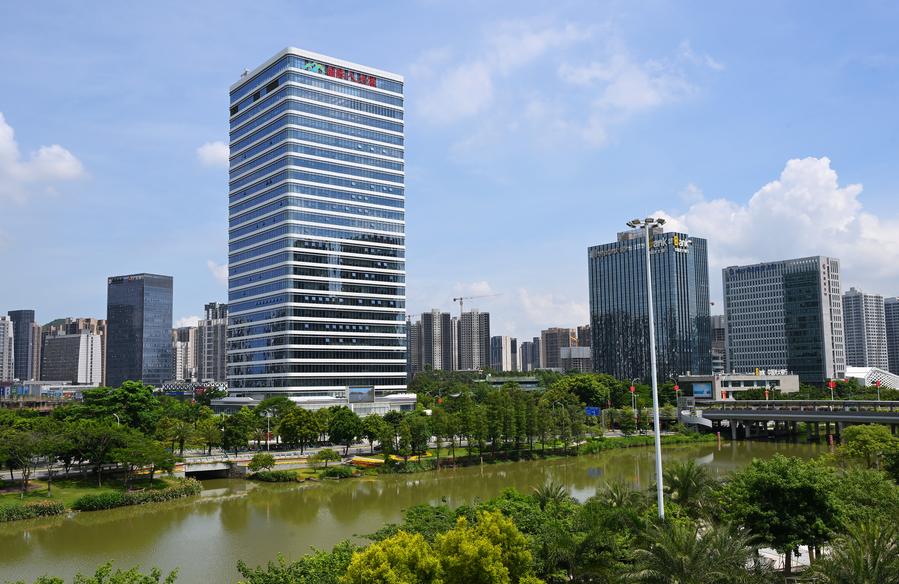Policies that Pull

China’s permanent residence policy protected the rights and interests of foreigners holding Chinese PR IDs in terms of their work, life, and entrepreneurship.
“The first time I stepped on Chinese soil was in October 1974 when I arrived from Sri Lanka. After one year of studying Chinese at the Beijing Language Institute (now the Beijing Language and Culture University), I went to the Northeast Institute of Technology (now the Northeastern University in Liaoning Province) for the next four years’ study,” said Raja Magasweran, managing director and co-founder of China Business Associates Inc.
When he finished university, Magasweran faced the question everyone faces when studying outside their country: “What will I do after graduation? Will I stay and work here or return home?” At that time, China’s reform and opening-up had just begun, and the plethora of new opportunities attracted him to stay and pursue his dreams.
Over the years, public policies to make foreigners’ life and work in China more convenient have evolved and expanded. Beijing’s foreign talent policies (FTP) trace their roots back to the establishment of New China in 1949, becoming well-constructed and institutionalized especially after 2000. The development of FTP represents the dynamics of China’s immigration policy system. Since the late 1970s, especially since Deng Xiaoping’s famous talk on the introduction of talents on July 8, 1983, more and more foreign talents began to work in China, contributing to the country’s development. Since the first wave of foreigners settling in China, the government began to draft policies to both manage them and facilitate their stay. Today, such policies are a crucial part of China’s immigration policy.
The basic pathways for applying for a permanent residence (PR) card prior to 2023 included the following: (I) Foreign employees who hold key positions in a business; (II) High-end and special-skilled talents; (III) Foreigners who have made a relatively large direct investment in China; and (IV) Family reunion-related reasons: a spouse of a Chinese citizen, children under the age of 18 years old who are unmarried, or elderly relatives who are over 60 and have direct relatives in China.
Then a significant move in 2023 further lowered the threshold for applying for PR. Several cities across China rolled out new policies greatly simplifying the PR application process for foreign Ph.D. holders. Shanghai and Shenzhen pioneered a fast-track PR policy for foreigners holding doctoral degrees, followed closely by Beijing and Guangzhou.

Straight from the horses’ mouth
After he decided to stay in China and not return to his home country Sri Lanka, Magasweran went through the process of changing his student visa to a work visa and went on to establish several companies in Beijing over the following years including California Trade Delegations Inc. and China Business Associates Inc. From 1979-1982, California Trade Delegations introduced 128 companies and investors to China like Control Data Corporation, and IBM.
In the ’80s when his children reached schooling age, his family decided to move to San Francisco to apply for American PR status. But he continued to live in both Beijing and San Francisco to manage his businesses. In 2006, he returned to China for good. Finally, in 2019, he applied for a Chinese PR card and then the Five-Star Card first issued in 2023 that can be used as a standalone identification document within China. It is valid for 10 years and the cardholders can reside continuously in China during that period with PR status and also work in China, without having to apply for a work permit. He is very happy now to live in the country he loves.
Steven Back came to China from Hungary almost two decades ago. He has been working in the cultural industry based in Shanghai as the CEO of Back & Rosta Ltd., which specializes in cultural digitization and intelligent museum solutions. Back is also the Hungarian National Museum’s general representative in China. His work has taken him all over China, working in various Chinese museums.
Back developed an interest in Chinese language and culture through his interactions with his many Chinese friends in his home country. He told China Today what made learning Chinese very interesting for him was learning about the “deep culture veins” imbedded in the language, making it a unique experience.
From a young age Back had dreamed of traveling. He first went to the Netherlands for his university studies where he met the young woman who would become his wife, a Chinese from Shanghai. They went to Shanghai in 2005 and settled down there with Back working in a Hungarian tech company.
He has seen the working environment in Shanghai progressively improve over the years. According to Back, today, to assist foreign talents adjust to Shanghai’s working environment, the city’s Foreign Experts Bureau often provides language services and holds service meetings to help new arrivals understand general government policies.

In 2016, Back applied for a PR card through the Chinese spouse pathway, and then the Five-Star Card when Shanghai first issued it in 2023. According to Back, now it is much easier to invite his family from Hungary to visit him. Purchasing train and plane tickets is also more convenient and when re-entering China, he can use the E-channel, the automated passenger clearance service at immigration.
In addition, from March 14, 2024, ordinary passport holders from Hungary can travel to China visa-free for up to 15 days for business, tourism, family visits, or transit. This makes inviting museum directors and experts to take part in cultural activities, which is a main part of his work, much more convenient.
Kirill Solonin, a Russian professor at Renmin University of China in Beijing, was one of the first applicants to get the Five-Star Card. He praised its design, which incorporates the five stars on the national flag, and a segment of the Great Wall, two iconic Chinese images, and said he had been eager to apply for it for a long time.
“The application process is not complicated at all,” he said. “I have been engaged in academic research in China for about 10 years, and most of my academic achievements were obtained in China… After getting this card, I feel very happy, as if it is recognition from the country.”
Zafar Hayat Khan from Pakistan is a professor at Nanning Normal University in Guangxi in south China, engaged in research and teaching in the field of thermo-fluids since 2006. Reflecting on how the Five-Star Card has made life more convenient, he said in an interview, he doesn’t have to return to the visa office over and over, like he did previously.
In addition to relaxing restrictions on PR cards, opening up more business opportunities, and reducing restrictions on entry visas from some countries, China has also been building “international talent communities” (ITCs) to meet the needs of foreign talents.
For example, Beijing has established several such communities, including the ITC in Beijing Economic Development District in the southern part of the capital. In 2024, the project will provide about 7,000 apartments units for foreign talents.
Haidian District on the other side of Beijing is focused on attracting global high-end talents across different fields. It began constructing an ITC for its Zhongguancun Science City in 2017 that would be pleasant for living, working, learning, and creating for expatriates. Over the past few years, Haidian has focused on attracting global high-end talents across different fields.

Looking into the future
Asked about his suggestions for improving the working environment in China, Magasweran told China Today, “When we think about the changes that could be made, we have to take into consideration the bigger picture of how far China has come from the early ’80s to today 2024.” The Chinese government is continuing to improve the living and working conditions for foreign talents and his advice to anyone planning to work in China is to “spend more time trying to understand the Chinese culture and the language.”
Back looks forward to the changes that might emerge in the future. He wonders if one day there might be a card similar to the Five-Star Card for people working in China for a short time, serving the purpose of a recognized local ID.
As China continues to develop policies for attracting international talents as well as improving the living and working environment of the talents already here, it is important to not forget where it has come from and appreciate where it is going.
Evolution of China’s permanent residence policy
The evolution of China’s permanent residence policy – the main public policy enabling long-term residence of foreigners – can be traced back to 1985, when the Law of the People’s Republic of China on the Administration of the Entry and Exit of Foreigners was passed. The policy set out the framework for short-term visas (including for tourists, visiting family or traveling on a business tour), long-term residence visas (for students pursuing one to five years of study, workers or investers) and permanent residence (PR).
In August 2004, the Measures for the Administration of Examination and Approval of Foreigners’ Permanent Residence in China was introduced and the “Chinese Green Card” system implemented, marking the end of the history of foreigners renewing their residence permits every year. In December 2012 came the Measures for Foreigners to Enjoy Relevant Treatment for Permanent Residence in China, and the Exit and Entry Administration Law, which went into effect on July 1, 2013, clarifying the conditions for PR in China.
This policy protected the rights and interests of foreigners holding Chinese PR IDs in terms of their work, life, and entrepreneurship. As a result, more and more foreigners applied for PR in China, and some gained approval. In 2017, the Ministry of Public Security expanded the scope of work units for foreigners applying for PR, optimizing the policy.
On December 1, 2023, the National Immigration Administration issued a new version of the PR ID for foreigners, commonly known as the “Five-Star Card.” As the Chinese green card was introduced almost two decades ago, the newer version comes with technological improvements and enables its holders to manage their affairs online without security concerns.
 Facebook
Facebook
 Twitter
Twitter
 Linkedin
Linkedin
 Google +
Google +










